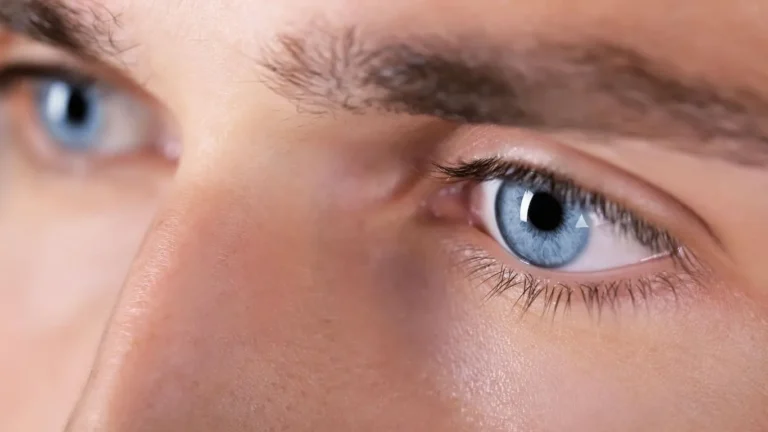Rheumatoid Arthritis vs Osteoarthritis: Key Differences Explained
Got joint pain and wondering if it’s RA or OA? Let’s break it down in a way that makes sense and helps you figure out which condition you might be dealing with.
When it comes to arthritis, most people know it’s about joint pain. But did you know there are actually different types of arthritis? The two most common types—rheumatoid arthritis (RA) and osteoarthritis (OA)—often get mixed up, even though they’re totally different in terms of causes, symptoms, and treatments. In this chat, I’ll explain the key differences between rheumatoid arthritis and osteoarthritis, so you can better understand what’s going on with your joints and how to manage the pain.
What’s the Difference Between RA and OA?
At a basic level, rheumatoid arthritis is an autoimmune disease, while osteoarthritis is a degenerative joint condition. But let’s dig into this a bit more because the details are what really matter.
Rheumatoid Arthritis (RA): Autoimmune Trouble
RA is when your immune system, which usually helps protect you from illness, starts attacking your own body—specifically, the joints. It’s considered an autoimmune disease, meaning your immune system mistakenly thinks your joints are invaders and tries to destroy them.
How does it affect you?
RA typically impacts smaller joints first, like those in your fingers, wrists, and toes. Over time, it can spread to other areas like your knees, elbows, and hips. The thing that sets RA apart from OA is that it often causes symmetric symptoms. This means if your left knee hurts, you might also feel it in your right knee. This is because it’s attacking both sides of the body equally. RA is also linked to systemic symptoms, so you might have things like fatigue, fever, or even weight loss. It’s more than just joint pain—it can affect your whole body. 
Osteoarthritis (OA): Wear and Tear
OA is more about the wear and tear on your joints. As we age, the cartilage that cushions the joints starts breaking down. Without that cushion, bones start rubbing against each other, causing pain, stiffness, and swelling. OA is the most common type of arthritis and typically affects weight-bearing joints like the hips, knees, and spine, though it can show up in the fingers or any joint that’s had a lot of use over the years. Unlike RA, OA is more of a degenerative condition, meaning it’s a natural part of the aging process or overuse, and it generally doesn’t involve the immune system attacking the joints.
Key Differences: Symptoms and Onset
Let’s break it down into a simple comparison:
1. Cause:
- RA: An autoimmune condition where the immune system attacks joints.
- OA: Wear and tear on the joints over time, often due to aging or repetitive use.
2. Joints Affected:
- RA: Affects smaller joints first (fingers, wrists, toes) and can affect both sides of the body symmetrically.
- OA: Typically affects weight-bearing joints like hips, knees, and lower back. It tends to be asymmetrical, meaning it might only affect one side of the body.
3. Pain and Stiffness:
- RA: Pain can be severe, often accompanied by swelling, and stiffness is worst in the morning, lasting for hours. Fatigue is a big symptom.
- OA: Pain is usually more about stiffness and discomfort, especially after long periods of sitting or standing. It often gets worse with movement.
4. Systemic Effects:
- RA: Can cause general symptoms like fatigue, fever, and even weight loss, affecting the whole body.
- OA: Generally affects only the joints, without systemic symptoms.
How Are RA and OA Treated?
Treatment for both conditions focuses on managing pain and improving joint function, but the specifics can vary quite a bit.
Rheumatoid Arthritis Treatment:
- Medications: The big guns for RA are disease-modifying antirheumatic drugs (DMARDs) and biologics that target the immune system.
- Pain Relief: Nonsteroidal anti-inflammatory drugs (NSAIDs) or steroids to reduce inflammation.
- Physical Therapy: To help with joint mobility and strengthening.
- Surgery: In severe cases, joint replacement might be necessary.
Osteoarthritis Treatment:
- Pain Management: NSAIDs and acetaminophen are usually the go-to for OA pain.
- Physical Therapy: Focus on strengthening muscles around affected joints.
- Lifestyle Changes: Maintaining a healthy weight to reduce stress on joints.
- Joint Replacement: In advanced cases where pain is severe and movement is restricted.

Living with RA vs OA: Day-to-Day Differences
Living with RA or OA can affect your daily life in different ways. With RA, the pain can be unpredictable and might involve flare-ups that leave you feeling exhausted. You might need to take more breaks or adjust your routine based on how your body is reacting. With OA, the pain is often more predictable. You might notice it more after walking long distances, climbing stairs, or after a long day of activity. Managing your weight, staying active, and avoiding repetitive joint stress are key to keeping OA symptoms under control. 
Conclusion
While both rheumatoid arthritis and osteoarthritis affect the joints, they have different causes, symptoms, and treatments. RA is an autoimmune disease that attacks joints, often causing more widespread symptoms, while OA is primarily a result of joint wear and tear, mostly affecting weight-bearing joints. Knowing which type of arthritis you have can help you get the right treatment and make the best decisions for managing your health. If you’re dealing with joint pain, it’s a good idea to consult a healthcare professional who can provide a proper diagnosis and treatment plan tailored to your condition.
Appendices
FAQs
- Can osteoarthritis cause swelling? Yes, while OA usually causes joint pain and stiffness, swelling can occur, especially during flare-ups.
- Is rheumatoid arthritis hereditary? There is a genetic component to RA, but it’s not solely inherited. Environmental factors also play a significant role in its development.
- Can exercise help with both RA and OA? Yes, regular low-impact exercise like swimming or walking can help with both RA and OA by improving joint flexibility and muscle strength.
- Are there natural treatments for RA or OA? Some people find relief with natural treatments like turmeric, omega-3 supplements, or acupuncture, but these should be used alongside conventional treatments.
- Is joint replacement the only option for severe OA or RA? Not necessarily. Joint replacement is one option, but other treatments, including medications and physical therapy, can help manage symptoms for a long time before surgery is needed.
References:
- National Institute of Arthritis and Musculoskeletal and Skin Diseases (NIAMS). (2023). Rheumatoid Arthritis vs Osteoarthritis: Understanding the Differences. NIAMS Website
- American College of Rheumatology. (2024). Living with Rheumatoid Arthritis. ACR Website
- Mayo Clinic. (2023). Osteoarthritis Treatment and Care. Mayo Clinic
Disclaimer:
This article is for informational purposes only and is not a substitute for professional medical advice. Always consult with a healthcare provider for diagnosis and treatment options related to arthritis or any medical condition.

Tarra Nugroho is a dedicated Nurse Practitioner with a strong foundation in family and preventive care. She brings both compassion and clinical expertise to her practice, focusing on patient-centered care and health education. As a contributor to Healthusias.com, Tarra translates medical knowledge into clear, empowering articles on topics like women’s health, chronic disease management, and lifestyle medicine. Her mission is simple: help people feel seen, heard, and informed—both in the clinic and through the content she creates. When she’s not caring for patients, Tarra enjoys weekend hikes, plant-based cooking, and curling up with a good health podcast.






